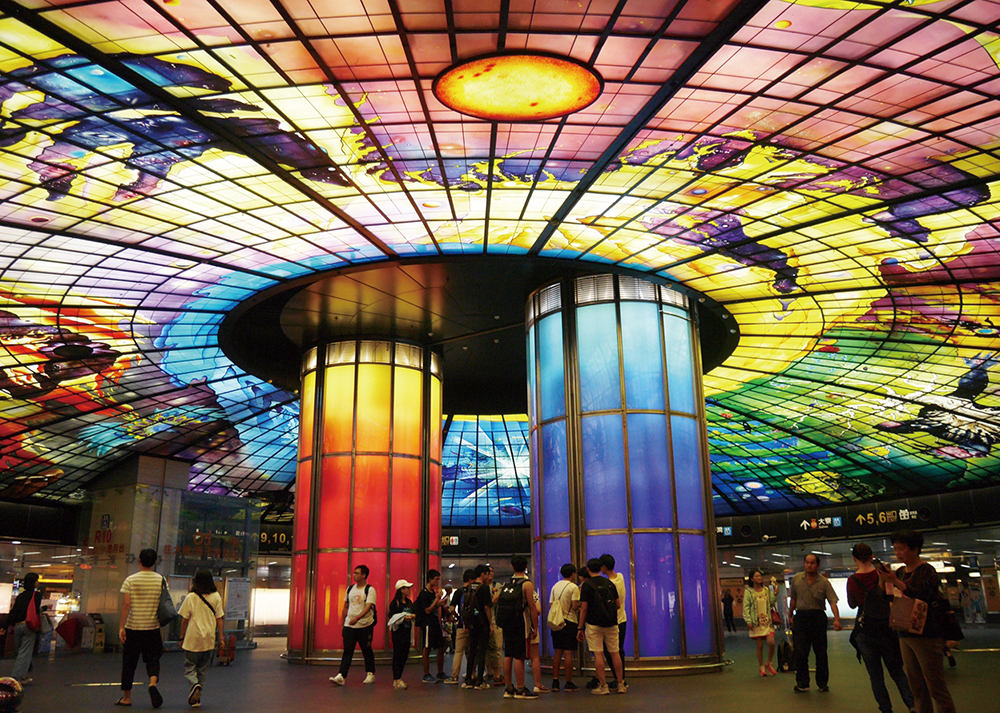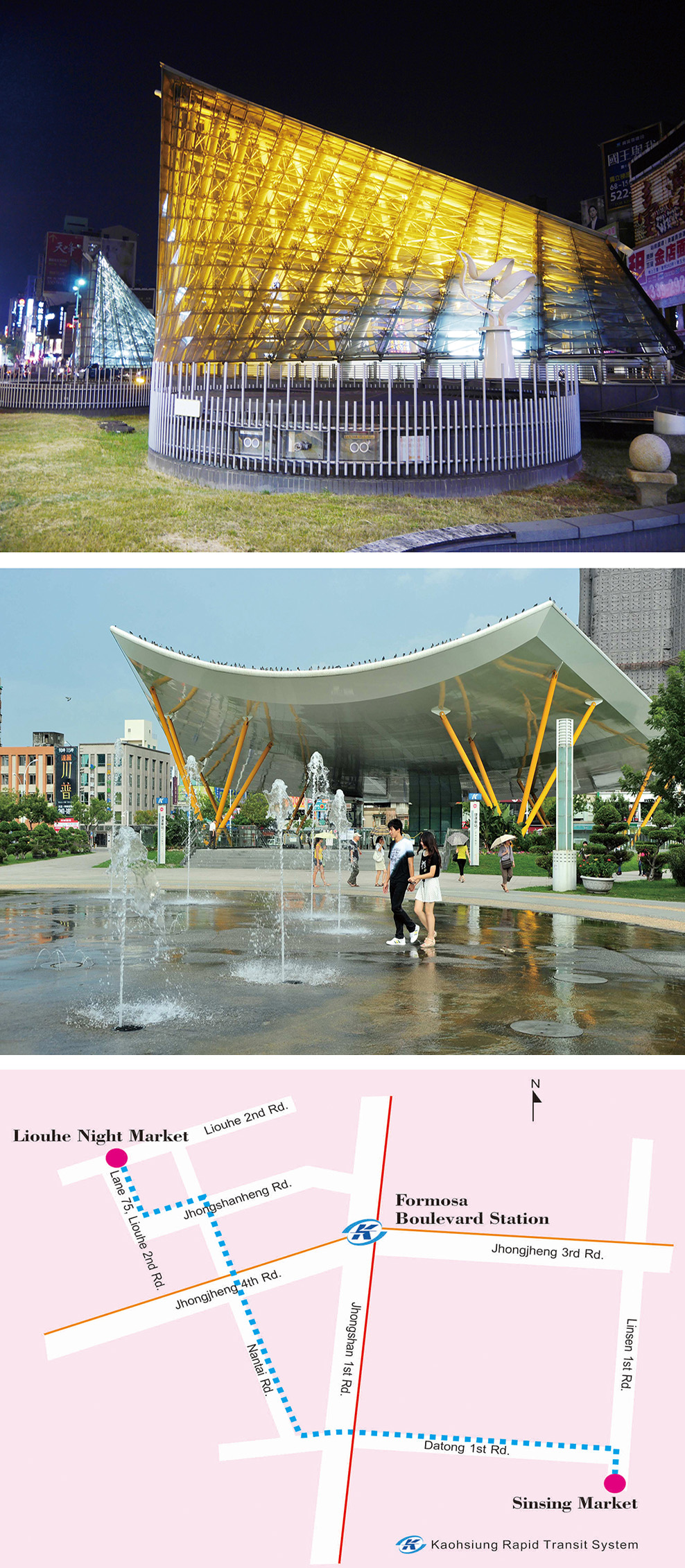Captivating Sinsing District
Captivating Sinsing District
◎Written by Sie Hong-wei
◎English translation: Hou Ya-ting
◎Photos by Sie Hong-wei
Sinsing District was previously known as Dagangpu (Barren River Bank). During the Cing-dynasty, it was developed into an agricultural region with its own agricultural irrigation systems. Later in the Cing-dynasty, Daganpu became known for its fertile farmland and the variety of crops and agricultural products that it produced.

In 1941, the Japanese government extended the Dagou railway, so it would run through Yancheng District's Hamasen neighborhood and then on to Dagangpu Station in Sinsing District. Jhongshan 1st Road (at the time the road was known by a Japanese name) was then constructed to transport goods throughout the city and bring easy access to Dagou rail. The region's well-developed transportation systems and infrastructure contributed greatly to its rapid economic growth.
President Department Store opened in 1975. At that time it was the largest department store in Taiwan. The area around it became Kaohsiung's most expensive part of town. It was President Department Store that drove the region's economy and gave rise to the Shinkuchan Shopping Area.


Sinsing District also played a historical role in Taiwan's democratic movement. On December 10, 1979 (Human Rights Day) crowds demonstrated in Sinsing District. The Formosa Incident (also known as the Kaohsiung Incident), drew international attention to Taiwan's plight for freedom and was considered to have been an important part of paving Taiwan's road to democracy. In order to commemorate this important historical incident, the city government renamed Dagangpu Station to Formosa Boulevard. It is the only one Kaohsiung Metro station that has both Red and Orange Lines running through it. It was designed by prominent Japanese architect Takamatsu Shin and voted the world's second most beautiful station by BootsnAll travel website. Formosa Boulevard Station is also the home of another famous landmark known as the Dome of Light. It is the world's largest public art installation made from individual pieces of colored glass. Created by Italian artist Narcissus Quagliata, it exhibits themes of earth, water, light and fire, along with integrated other local themes. It is definitely one of Kaohsiung's finest artistic attractions.

Kaohsiung's Liouhe Night Market and Nanhua Shopping Area are also located in Sinsing District. Liouhe Night Market was established in the 1950s and is one of the city's most acclaimed night markets. It is a great place to enjoy local delicacies. Near the night market there are also a number of other well-known eateries. Shantou Noodle can be found on Linsen 1st Road. It is open from 4 pm to 4 am. Its chewy noodles and tasty side dishes keep its customers coming back. Another recommended eatery is Yuansiang Beef Noodle. Located close to Shantou Noodle, it serves up tender beef in delicious soup and is known to be one of Kaohsiung's best beef noodle shops. Sin Long Jyu, serves up traditional breakfast foods. Its most popular items include steamed buns stuffed with pork, clay oven rolls and Chinese omelets.
Two of the most eminent temples in the district are Gushou and Jyueyuan Temples. Gushou Temple was established in 1856 and are mainly dedicated to the Goddess Mazu. In addition, it also worships other deities including Baoshen Dadi (Chinese God of medicine), Jhu Wang Ye and Chih Wang Ye (Royal Lords Jhu and Chih). There is a famous regional legend that tells of a couple that were elderly devotees who in 1856, went to Meizhou Island which was part of China's Fujian Province and carried a Mazu statue from the Meizhou Mazu Temple to the Gushou Temple. They continue to hold ceremonies that venerate the goddess and even give scholarships in her namesake.
In 1953, Jyueyuan Buddist Temple was established. Monks serve at the temple and hold Buddhist assemblies and lectures. Jyueyuan Temple is one of the region's most prominent Buddhist temples. Visitors should definitely come to Sinsing District to see the variety of temples and experience the local culture.